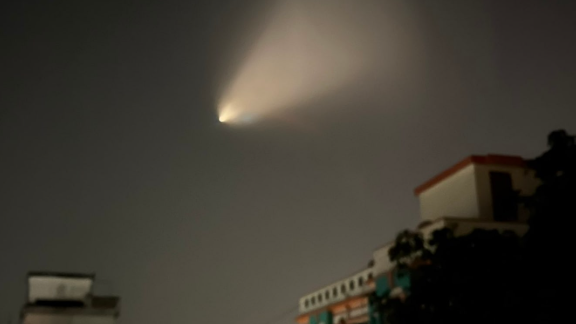

Kolkata: The marshlands of West Bengal are once again shrouded in mystery as the infamous Aleya ghost lights have made a dramatic return, leaving local fishing communities in terror and scientists scrambling for explanations.
These flickering balls of light that emerge in the marshy regions of West Bengal and Bangladesh have caused many deaths, and recent sightings suggest the phenomenon is intensifying. Over the past month, five fishermen from the Sundarbans region have gone missing after reporting encounters with these otherworldly illuminations.
Ratan Das, a 45-year-old fisherman from Gosaba, barely escaped what he describes as a "dance with death" last Tuesday evening. "I was returning home when I saw three bright lights floating just above the water. They were blue-green, like nothing I've ever seen," Das recounted, his hands still trembling. "The lights seemed to follow me, and I lost my way completely. By some miracle, I found the shore at dawn."
According to local beliefs, these ghostly lights are the ghostly remnants of fishermen who met their untimely demise while out fishing in the marshes. The fishing community has long regarded these apparitions with a mixture of reverence and fear, believing these lights belong to those souls who died due to trapping in this swamp while fishing.
Local authorities report a 300% increase in Aleya light sightings since early May 2025. The phenomenon, which typically occurs during monsoon months, has extended well into the dry season, puzzling both locals and researchers.
Dr. Anirban Ghosh, a atmospheric physicist from Jadavpur University, has been studying the phenomenon for over a decade. "What's particularly intriguing about this year's sightings is their persistence and intensity," Dr. Ghosh explained. "We're seeing reports of lights that appear for hours rather than minutes, and they're exhibiting behavior patterns we haven't documented before."
The Coast Guard has issued advisories warning fishermen to avoid the most affected areas, particularly the remote channels near the Bangladesh border where most recent incidents have occurred.
While local folklore attributes the lights to restless spirits, scientists believe that as gases rise from the soil and water and escape into the atmosphere, methane mixes with phosphines and creates the blue lights seen hovering over the swamps. The Aleya ghost lights may result from the oxidation of phosphine, diphosphane, and methane, chemicals formed during organic decay that emit photons, creating the mysterious glow.
However, this scientific explanation fails to account for the lights' apparent intelligence and their ability to lead people astray. Dr. Ghosh admits, "The combustion theory explains the basic luminescence, but it doesn't explain the coordinated movement patterns or why they seem to respond to human presence."
The Aleya lights have claimed at least 47 documented lives over the past century, according to local police records. It is considered to be one of the most haunted places in West Bengal and India, with victims typically found drowned in remote parts of the swamp, often miles from where they were last seen alive.
Superintendent of Police Madhab Chandra Mondal has deployed additional patrol boats in the region. "We're treating this as a public safety issue," Mondal stated. "Whether supernatural or natural, these lights are leading people to their deaths, and we cannot ignore that reality."
The recent surge has attracted international paranormal researchers and atmospheric scientists to the region. Dr. Sarah Matthews, a atmospheric anomaly specialist from Oxford University, arrived in Kolkata last week to study the phenomenon firsthand.
"Similar lights have been reported worldwide – from the Marfa lights in Texas to the Min Min lights in Australia," Dr. Matthews noted. "But the Aleya lights of Bengal appear to be uniquely interactive with human presence, which makes them particularly fascinating from a scientific standpoint."
Local panchayat leader Sunil Kumar Halder has organized community awareness programs, though he admits the challenge of balancing scientific explanation with deeply held cultural beliefs. "For generations, our people have lived with these lights. They're part of our identity, our folklore," Halder explained. "But when they start taking lives, we must act."
The West Bengal government has announced plans to install a network of monitoring devices throughout the affected marshlands to study the phenomenon systematically. Chief Minister Mamata Banerjee has allocated ₹2 crore for the research project, calling it "a matter of both scientific curiosity and public safety."
As the investigation continues, the Aleya lights remain one of India's most enduring mysteries, straddling the line between science and the supernatural. For the fishermen of Bengal's marshlands, however, the lights represent a very real and present danger that demands respect, whether born of spirits or swamp gas.
The state government has set up a 24-hour helpline (1800-200-1234) for fishermen to report sightings or request assistance in affected areas.